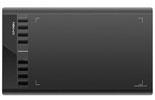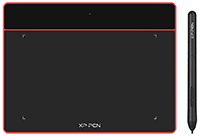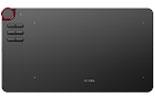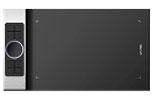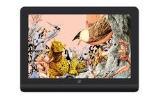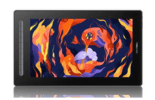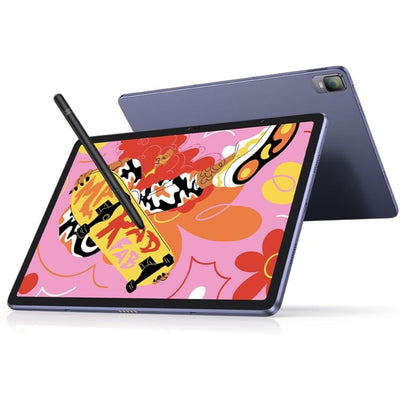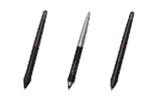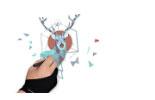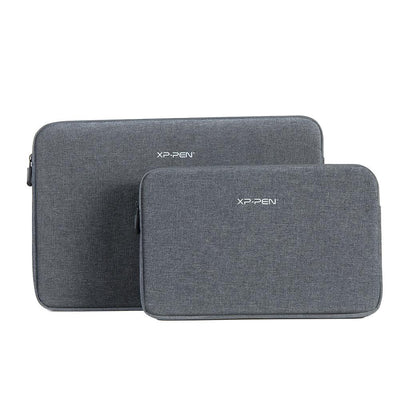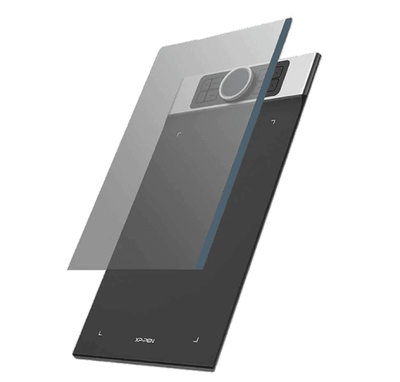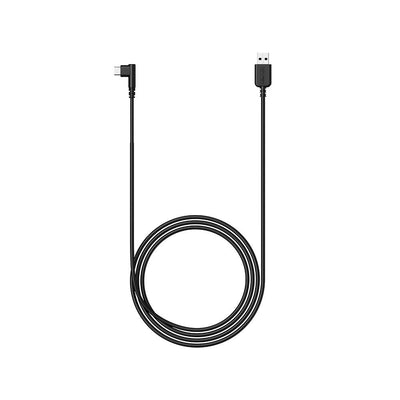Using a Graphic Tablet for Animation and 3D Modelling

A graphic tablet is a crucial tool for gaining precision, control, and creativity in your work, whether you're a professional 3D modeller or an aspiring animator.
We'll go through everything you need to know about using a graphic tablet for these fascinating areas of digital art in this article.
Understanding the Basic Components of a Graphic Tablet
Before we get into the advantages of using a graphic tablet for animation and 3D modelling, it's essential to understand the basic components of a graphic tablet. A graphic tablet usually comprises two main parts: the tablet and the stylus.
The tablet's active area is where you'll create your artwork, while the stylus is used to navigate the cursor on your computer screen. It's crucial to consider the pressure sensitivity of the stylus, as it determines the thickness and opacity of your lines.
Benefits of Using a Graphic Tablet for Animation & 3D Modelling
Using a graphic tablet for animation, 3D modelling or 3D Models For Games, it comes with many advantages, such as precision and control, comfort, natural feel, speed, and efficiency.
With a graphic tablet, you can create detailed and intricate designs with much finer control over your lines and shapes. The stylus is also much more comfortable than using a mouse, reducing the risk of hand and wrist strain and injury.
Drawing with a stylus feels more natural and intuitive, enabling a fluid and creative process. Ultimately, using a graphic tablets can help you work more quickly and accurately, increasing your efficiency.
Setting Up a Graphic Tablet for Animation & 3D Modelling
The process of setting up a graphic tablet for animation and 3D modelling is simple and easy to understand. The drivers for your tablet can be downloaded and installed first by visiting the manufacturer's website.
Following that, you can change your tablet's settings, such as pressure sensitivity and active area size. You can also customise the shortcuts on your pen for quick access to frequently used features to make your work easier.
How to Use a Graphic Tablet for Animation & 3D Modelling
Getting started with using a graphic tablet for animation and 3D modelling is easy. To begin, just draw with your stylus on the active area of the tablet for sketching and concept art.
For 2D animation, you can use your graphic tablet to create frames, add special effects, and sound.
When it comes to 3D modelling, you can use the tablet to shape and manipulate 3D objects, as well as to add textures and shading to enhance the realism of your designs.
Tips and Tricks for Using a Graphic Tablet for Animation and 3D Modelling
You can get the most out of using a graphic tablet for animation and 3D modelling by following a few tips and methods.
For example, calibrating your tablet can make sure that the pen is functioning properly and producing precise lines. You should also be able to change the line thickness and opacity by adjusting the pressure sensitivity of your pen.
By providing you easy access to frequently used features, shortcuts can save you time. You can also save time by customised your pen to make it easier to use for a longer amount of time.
Common Mistakes to Avoid When Using a Graphic Tablet for Animation and 3D Modelling
When using a graphic tablet for animation and 3D modelling, it's important to avoid some common mistakes to ensure the best results.
One such mistake is neglecting to calibrate your tablet, which can lead to inaccuracies in your lines and shapes. Another is not adjusting the pressure sensitivity of your stylus, resulting in lines that are either too thick or too thin.
It's also important to make use of the shortcuts on your stylus to improve your workflow and avoid wasting time. Lastly, not customizing your stylus to fit your grip and hand size can cause discomfort and fatigue.
Recommended Graphic Tablets for Animation and 3D Modelling
When choosing a graphic tablet for animation and 3D modelling, it's important to consider factors such as the size of the tablet, the pressure sensitivity of the stylus, the level of customization available, and the price.
The Artist 22R Pro is a popular choice for its large active area and advanced features, while the XPPen Deco 01 v2 offers a more affordable option with a smaller active area.
The XPPen StarG640 is a budget-friendly choice with high pressure sensitivity, and the XPPen Deco Pro MW offers a larger active area and customizable buttons. Ultimately, the best graphic tablet for you will depend on your specific needs and preferences.
Conclusion
In conclusion, using a graphic tablet for animation and 3D modelling can greatly enhance your digital art experience. With its precision and control, comfort, natural feel, and speed and efficiency, a graphic tablet is a must-have tool for artists and animators.
By understanding the basic components, benefits, and best practices for using a graphic tablet, you can unlock your full creative potential.
FAQ's
1. Do I need a graphic tablet for 3D animation?
- You don't necessarily need a graphic tablet for 3D animation, but it can be helpful for certain tasks like sculpting and texture painting.
2. What do most 3D animators use?
- Most 3D animators use specialized software like Autodesk Maya, Blender, or Cinema 4D along with a combination of tools including graphic tablets, 3D mice, and traditional input devices like keyboards and mice.
3. Can you use a drawing tablet for 3D animation?
- Yes, you can use a drawing tablet for 3D animation, especially for tasks that involve digital drawing, sculpting, or painting within 3D software.

